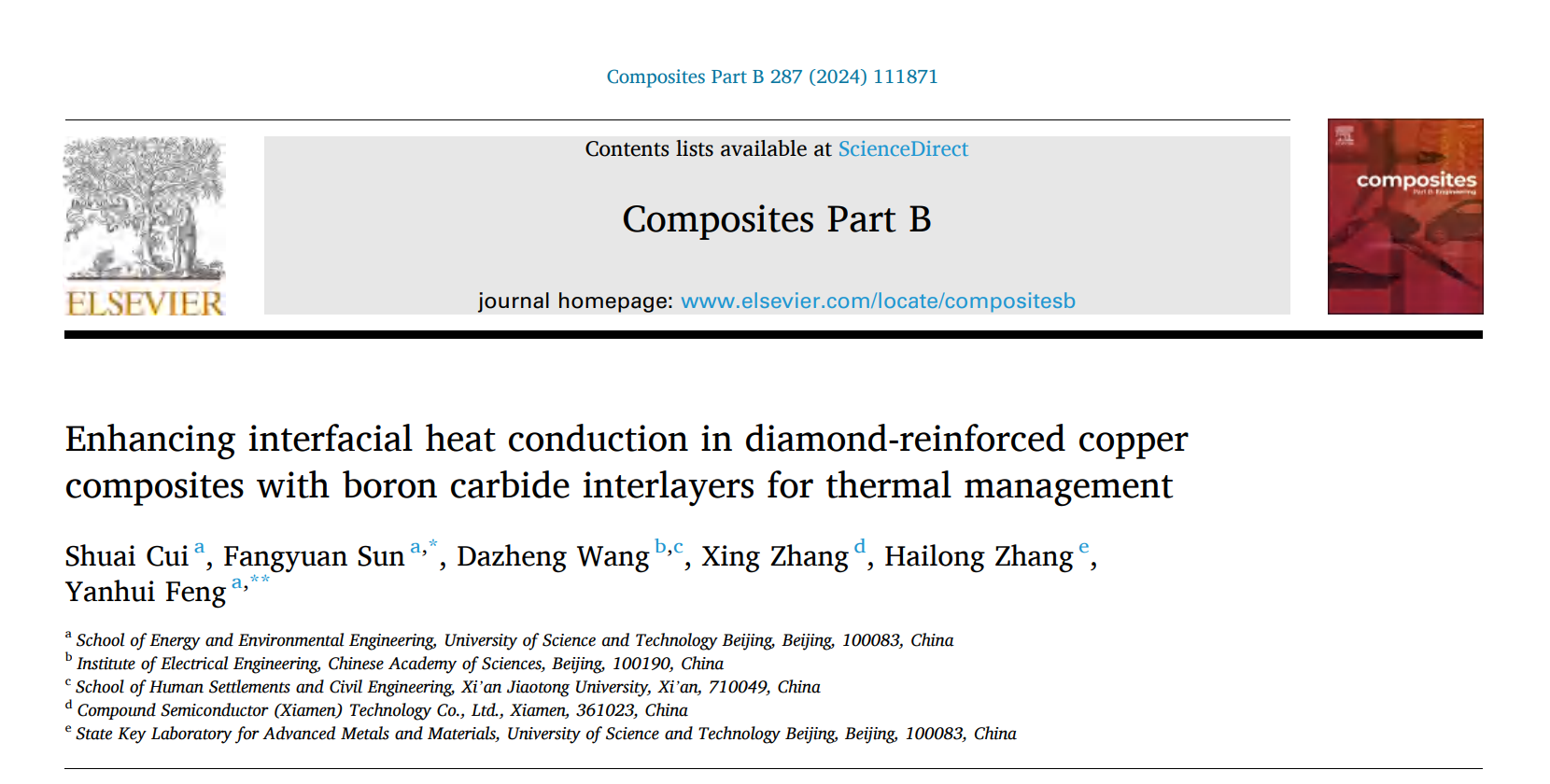Pos:
Home KnowledgeTechnologyEnhancing interfacial heat conduction in diamond-reinforced copper composites with boron carbide interlayers for thermaDiamond-reinforced copper composites as important thermal management materials for advanced electronic packaging have long faced the challenges of weak interfacial bonding due to poor chemical wettability between copper and diamond and extremely low solubility war of carbon in copper, as well as the key limiting factor of interfacial thermal resistance due to the difference in heat carriers between copper and diamond.

Recently, the academic paper ‘Enhancing interfacial heat conduction in diamond-reinforced copper composites with boron carbide interlayers for thermal management’ by Shuai Cui and Fangyuan Sun, Science and Technology University of Beijing in Energy and Environmental Engineering, and Dazheng Wang, Xi'an Jiaotong University, has been published in Composites Part B: Engineering, the top international journal in materials field, which is published by Elsevier Ltd. Enhancing interfacial heat conduction in diamond-reinforced copper composites with boron carbide interlayers for thermal management’ was published in Composites Part B: Engineering, a top international journal in the field of materials.
The study used <001> oriented, high thermal conductivity single crystal diamond substrates with dimensions of 10mm×10mm×1mm prepared by CSMH as the substrate, and improved the interfacial bonding by introducing a carbide modification layer effectively connecting diamond particles with the copper substrate, which significantly enhances interfacial thermal conduction and improves the interfacial thermal conductivity of diamond and copper substrates. This study breaks through the gap in the study of the influence of interfacial optimisation on the thermal properties of multilayers, and provides a more in-depth theoretical basis for the enhancement of heat exchange at the nanoscale interface, and provides referable suggestions for the future fabrication of copper/boron carbide/diamond multilayers for practical applications.
CSMH single-crystal diamond plates were synthesized via Microwave Plasma Chemical Vapor Deposition (MPCVD), a process that leverages microwave excitation to generate plasma for depositing thin fflms on substrates. The non-polar discharge ensures plasma purity, and the concentrated microwave discharge area prevents substrate corrosion, facilitating largearea, high-quality, and uniform diamond fflm deposition.
Monocrystalline diamond (thermal grade, optical grade, electronic grade) is one of the core products of Chemosynthesis, with the best thermal conductivity of all materials (up to 2200W/m.k) and excellent properties such as high hardness, high chemical stability, high optical transmittance, extremely wide forbidden band width, negative electron affinity, high insulating and good biocompatibility, etc. It has a wide range of prospects for application areas in the fields of ultra-precision machining, semiconductors, aerospace and aviation, Nuclear energy and other high-tech fields have a wide range of applications in the field of development prospects, and even in many areas of the raw material has become irreplaceable.
 闽ICP备2021005558号-1
闽ICP备2021005558号-1Leave A Message